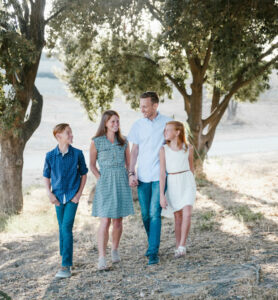By Genovino Ferri and Mary Jane A. Pavia
Editor’s Note: We offer slices of Genovino and Mary Jane’s article for our website readers. Our subscribers can access their article now in our Subscribers’ forum and will receive their print issue mid December. Starting January 1, 2020, all new articles will be shared open source on our website.
As the holidays approach, many families consider this an opportunity to leave their domicile for adventures near and abroad. Some travel to visit family, some leave as a form of escape, and others pack up the entire clan for a much-anticipated vacation.
But what, in fact, does vacation mean and what does it entail?
At the word level, vacation derives etymologically from the Latin vacantia, which is the neuter, plural noun-form of vacans, which, in turn, is the present participle of vacare, meaning “to be empty” but also “to be free”. So, do we consider a vacation a chance to explore the emptiness that is freedom or a freedom that is emptiness?
As you consider the holidays and perhaps even a family vacation, we offer our experiences with vacations as a negentropic opportunity if started with some questions, some explorations, and some certainties.
Potential Certainties
At this point, we offer three steps for a negentropic opportunity on a family vacation.
Step one: The first important consideration is knowing that, even though it is temporary, going away on vacation, re-calls the transitions of our own life stories. These transitions (or “passages” between our lives’ successive evolutive stages), however, represent the individuating patterns of separation along our own arrows of time.
The family will distance itself and individuate itself with the vacation, like a complex living system, as it moves into another field with fewer toxins. This represents the first condition that could facilitate a redefinition of that family. That is to say the opportunity to incisively mark certain specific patterns that could induce a negentropic reset and that are not merely chaotic or chance occurrences.
 The second step involves marking out a time for special meetings during the vacation (and only then), which is dedicated to talking about ourselves and telling our stories, looking into each others’ eyes with as slow, intense prosody as is authentic, bearable and including. Gathering together, that is, in shared, identified space and creating very precise temporal oases during the vacation. In this way the circularity of the vectors of the living body family can be re-established.
The second step involves marking out a time for special meetings during the vacation (and only then), which is dedicated to talking about ourselves and telling our stories, looking into each others’ eyes with as slow, intense prosody as is authentic, bearable and including. Gathering together, that is, in shared, identified space and creating very precise temporal oases during the vacation. In this way the circularity of the vectors of the living body family can be re-established.
Giving internal time back and giving back to ourselves in these meetings, internal time, limbic time, time for the chest and for breathing; time for sentiments, for being with and for listening to ourselves and listening to others (children, parents, aunts and uncles, grandparents, grandchildren, nieces and nephews, partners), giving back “Us Time” to our families.
Reading and recounting together, in these meetings, the bottom-up time of the family history and its meaning; the times of the life experiences of the family members and their expression, even bodily, over time.
In this way affective serotoninergic (5HT) time is given back to family relationships with knowing eyes that look at the other and return to their own Self and to their own nose (to mention a very precise, bodily activation of ontogenetic patterns in the Reichian Analytical setting)(Ferri, 2019).
All this is experienced in a circular arrangement of family members, which makes the vector-arrows’ circularity marked, but also establishes the field boundaries, making possible new, or renewed, relational density within the family’s internal time.
And then the third step, which is another important oasis of special meeting-time during the vacation, which accompanies and completes the preceding step:
Walk together . . . in beautiful dopaminergic silence, crossing our own cortico-spinal pathways (Ammanniti & Gallese, 2014), feeling the movement of proceeding alone and together as a living-family-body and going forwards looking at the way ahead,be it smooth, problematic, beautiful, complex, straight or undulating. Taking it on with intelligent flexibility, and with the possibility of modifying it, so as to reach that objective previously shared and agreed by everybody.
Walk together, waiting for each other, if necessary, in truth even strolling slowly, looking sideways at each other and turning the neck to the left and to the right (to mention another, very precise bodily activation of ontogenetic patterns in the Reichian Analytical setting) (Ferri, 2019), without too many words, allowing corporeity to express itself in facial expression, in looking, in movement, in breathing and in lifting the eyes above the horizon towards the sky.
Photo Credits
Car: tookapic from Pixabay
Time: Bruno Glatsch from Pixabay
Family walking: Allen Taylor from Unsplash
Christmas wreath: Erwan Hesry on Unsplash
 Genovino Ferri is a psychiatrist/Reichian analyst. He is the director of the Italian School of Reichian Analysis and the Director of Mind Body Collection of the Alpes Edizioni.
Genovino Ferri is a psychiatrist/Reichian analyst. He is the director of the Italian School of Reichian Analysis and the Director of Mind Body Collection of the Alpes Edizioni.
 Mary Jane A. Paiva is a clinical psychologist, body psychotherapist and Reichian Analyst trained by Genovino Ferri and Federico Navarro, who have been practicing this model for over 40 years.
Mary Jane A. Paiva is a clinical psychologist, body psychotherapist and Reichian Analyst trained by Genovino Ferri and Federico Navarro, who have been practicing this model for over 40 years.









